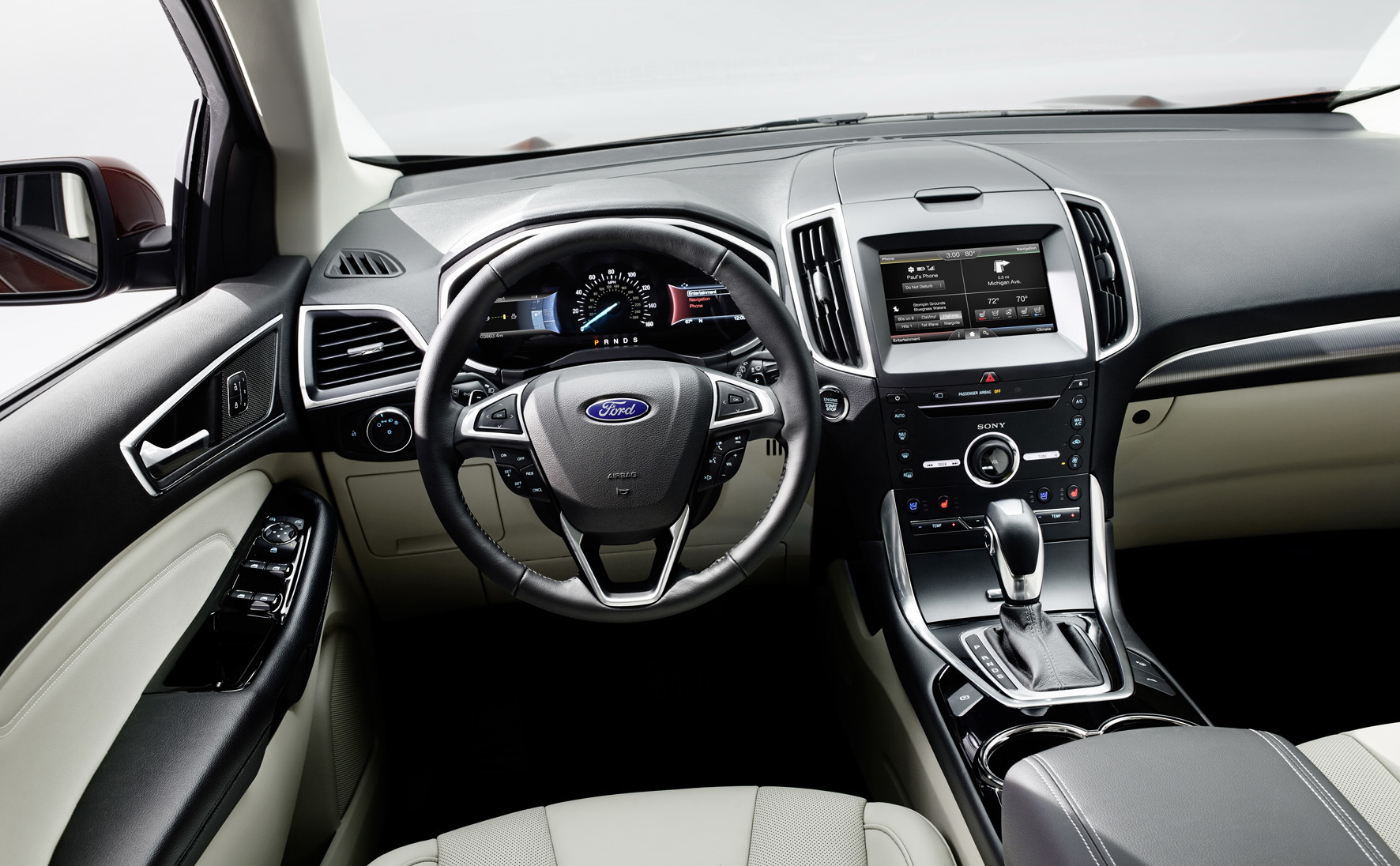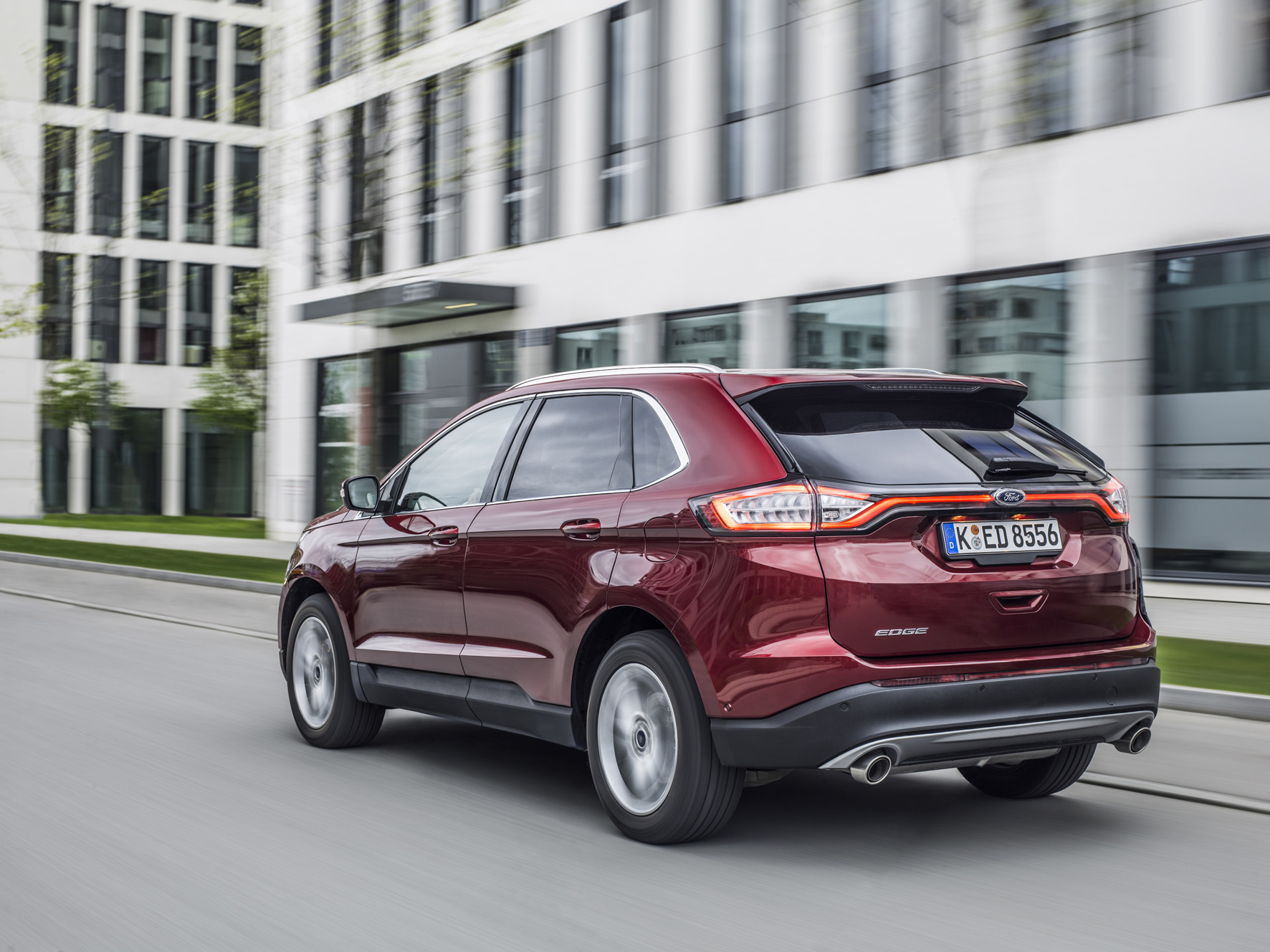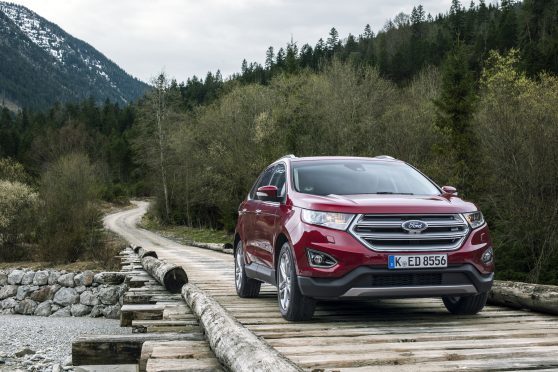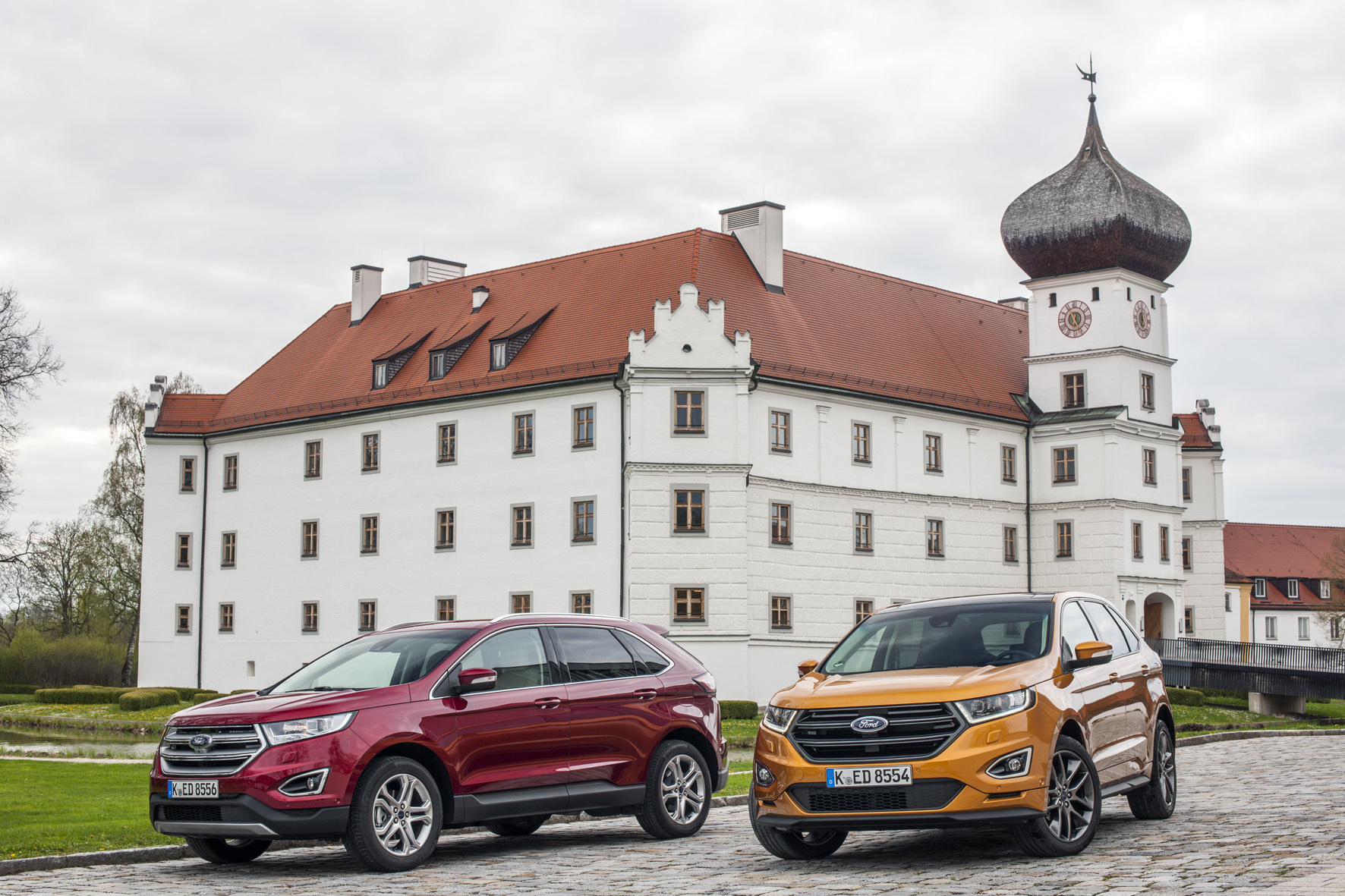From the concept to the end product, the Edge is a new thing.
It’s Ford of Europe’s first large SUV, based on Mondeo undergarments but with four-wheel drive, two powerful diesel engines (with more under consideration) and a new, premium shtick with which the American company wants to poke the German luxury brands.
It’s part of the OneFord programme so it’s built in North America and exported all over the globe with minor changes to suit different markets. We awkward Europeans with our bumpy B-roads and our derestricted autobahns had a big say in how the suspension and handling were tuned.
If you’re thinking it looks a bit “Murican” in the pictures, you’re not alone. But the blocky styling and slightly in-your-face dark wheels and detailing of the range-topping Sport model sing a pretty good tune in the metal.
The Titanium model is a bit more reserved; a bit more middle-of-the-road. It’s improbably wide, though, with a high and highly-shaped bonnet, so it looks even bigger than it actually is.
While the build and materials quality is for the most part a big step up for Ford, it’s competing with S line Audi Q5s and mid-grade BMW X3s. Even the entry-level Jaguar F-Pace is a rival. Next to those badges, the Blue Oval can’t really compete.
Where the Edge scored points is for its clever design, which squeezes loads of usefulness into its 4.8-metre length. There are bag hooks in the boot, a spare wheel, a cabin wide enough for three kids to sit side-by-side on bean bags and enough clever storage spaces to make it a nightmare for customs officials at border crossings.
The amount of empty air around the front seats is amazing. Even Mr Universe wouldn’t have shoulders broad enough to fill the width.
Including the stubby mirrors, the Edge is well over two metres wide and it feels it on the road, but it does create an implausibly spacious cabin.

Driven back-to-back, the more powerful diesel offers noticeably more low-down punch. The twin-clutch automatic gearbox helps make the most of that, too, only kicking down when your throttle pedal inputs clearly ask for it.
The 2.0-litre diesel might not be the most refined on the market but Ford’s soundproofing and standard-fit Active Noise Control suppress wind and road noise like you wouldn’t believe. The quiet at motorway speeds (and beyond) is uncanny.
The Sport’s variable-ratio steering is frustrating, as is every other system like it. Approach the same corner at different speeds and you’ll need two entirely different steering inputs to negotiate it.
The standard setup is slower to turn the car but feels more consistent, despite a strong urge to self-centre. Neither transmits any meaningful road feel.
Sport models have a harder suspension system that permits less body roll but rides with a jiggly edge on its 20in wheels that’s missing from the Titanium and its 19s.
As a trade-off the Sport feels more planted in corners, and has the more supportive seats for the job.
The model to go for is the Titanium with the Lux pack, the more powerful engine and the automatic gearbox, although to create it you also need to add the full-fat and rather bass-heavy Sony stereo system.

All of a sudden it’s a £37,000 car. Add LED headlights for another £1,000 on top of that. The panoramic roof is £800. The £40,000 barrier is within fairly easy reach. Ouch.
Clearly a Ford enthusiast, of which there are many, will look at the Edge as a proper family car. And it is. It’s America-big so feels a bit wide for a lot of minor European roads but the amount of space and practicality is incredible.
If the German options just don’t light your candle, the Edge offers a new choice.
THE FACTS
Model: Ford Edge 2.0 Duratorq AWD Titanium
Price: From £34,495
Engine: Four-cylinder turbodiesel producing 207bhp and 332lb/ft
Performance: Top speed 131mph, 0-62mph in 9.4 seconds
Economy: 48.9mpg (19in wheels)
CO2 rating: 149g/km (19in wheels)

